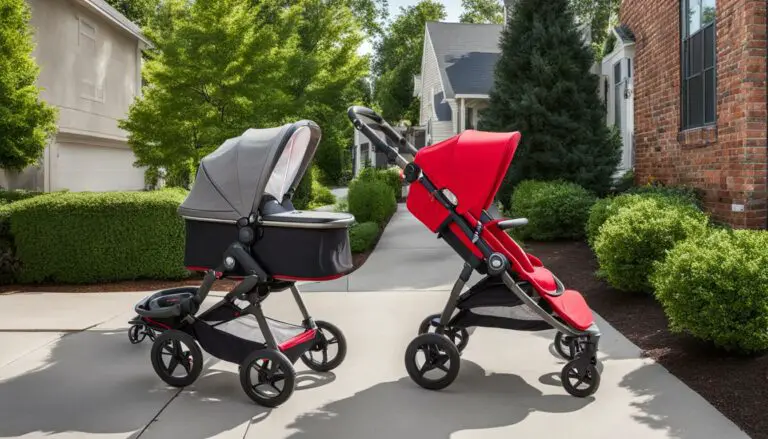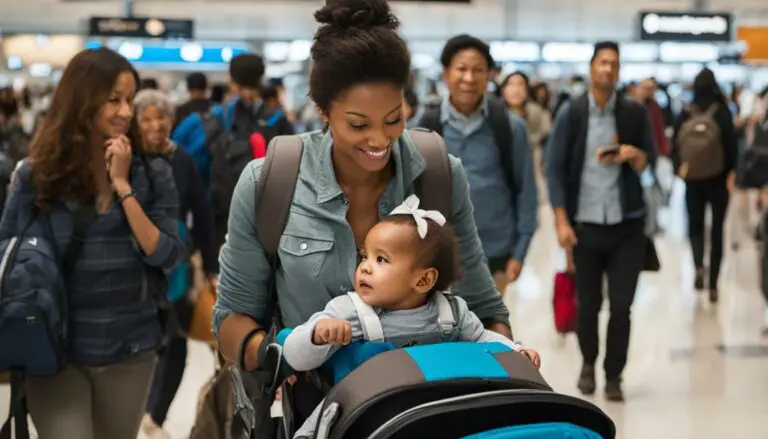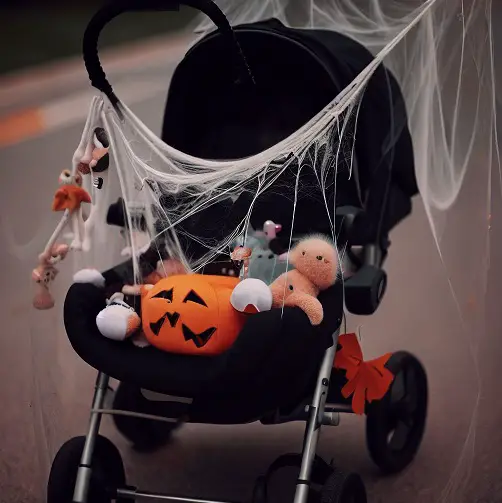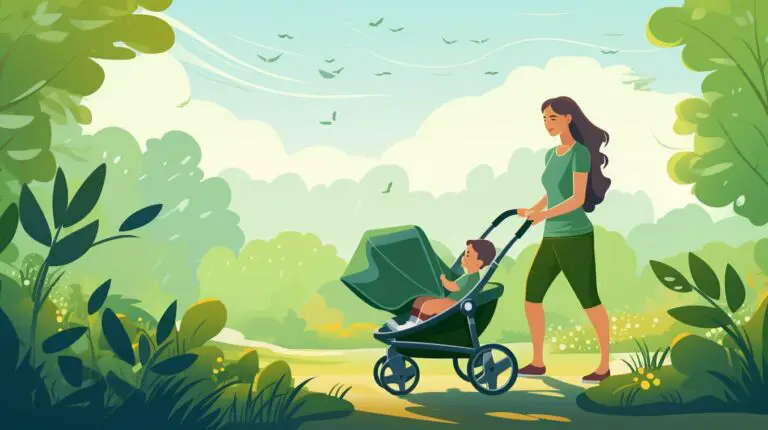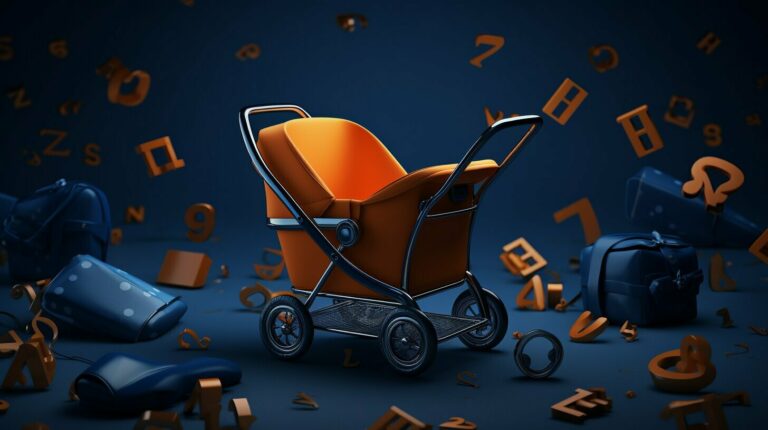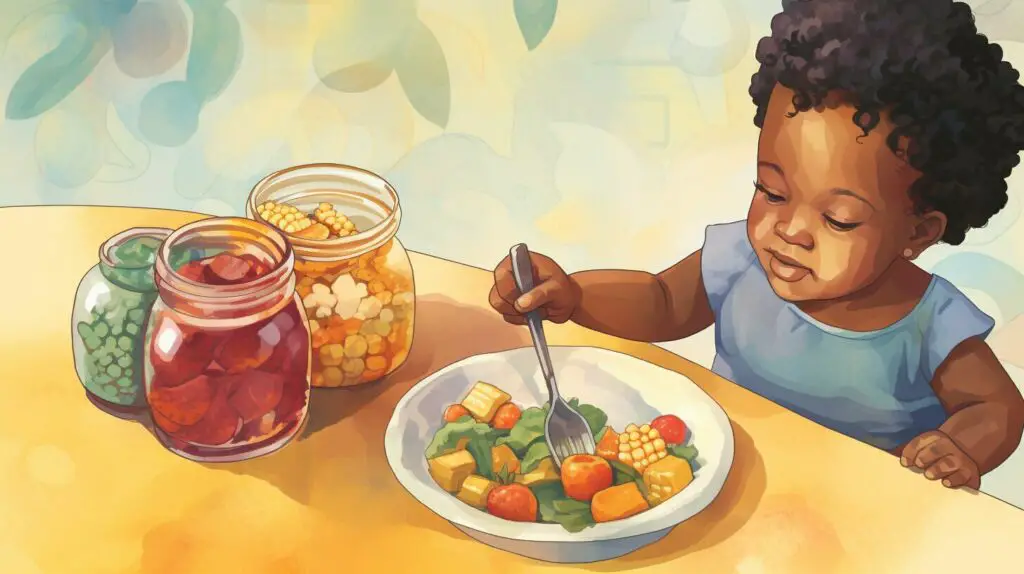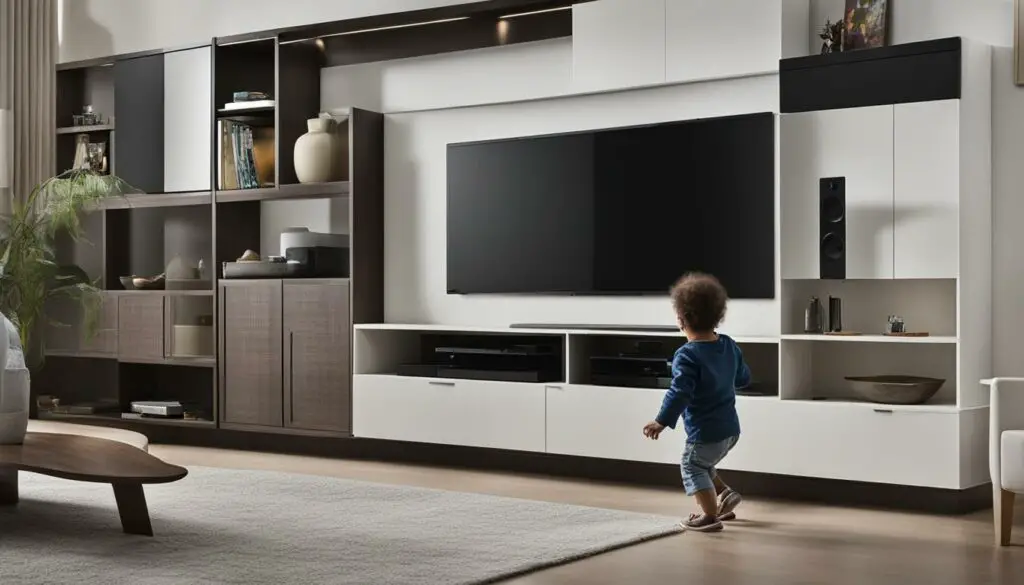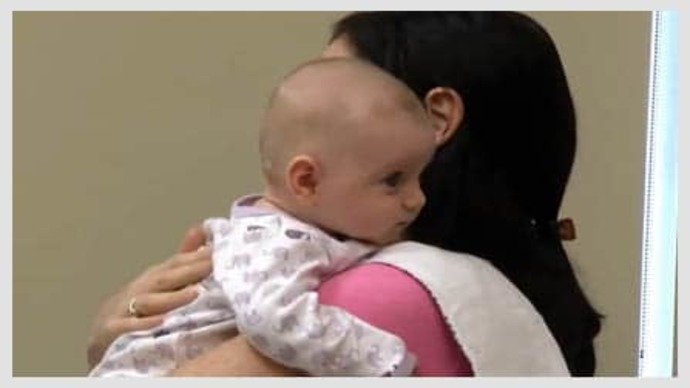As a parent, taking your baby out for a stroll is a great way to bond and explore the world together. However, one important decision you’ll need to make is which way your baby should face in the stroller. This choice can have an impact on your baby’s safety, comfort, and overall development. So, which way should your baby face in a stroller? Let’s explore the options together.

Key Takeaways
- Deciding which way your baby should face in a stroller is an important decision that should be made with safety, comfort, and developmental factors in mind.
- Facing forward and facing back both have their pros and cons, including visibility, interaction, and stimulation.
- It’s important to consider safety precautions for each position, including potential risks and guidelines to follow for a secure experience.
- The position of the baby in a stroller can impact their cognitive, social, and physical development, so it’s important to create a stimulating and supportive environment.
- Most babies have a preference for facing forward or facing back in a stroller, and parents can use this time to bond with their baby through positive interaction and connection.
Pros and Cons of Facing Forward and Facing Back
When it comes to strolling with your baby, one of the most important decisions you’ll make is which way to position your little one. Should your baby face forward or face back in the stroller? Both options have their advantages and disadvantages, so it’s important to consider them carefully.
Facing Forward: When your baby is facing forward, they have a wide view of the world around them. They can see the people, animals, and objects passing by, which may keep them engaged and entertained. Additionally, facing forward can encourage independence and curiosity, as your baby explores the world on their own terms. However, facing forward can also be overwhelming for some babies, as they are bombarded with new stimuli. They may also feel isolated from their caregiver, as they cannot see and interact with them as easily.
Facing Back: When your baby is facing back, they have a closer connection with their caregiver. They can see and hear their voice, which can be a source of comfort and security. Facing back can also help reduce overstimulation, as your baby is shielded from the constant flow of visual input. However, facing back can also limit your baby’s exploration and curiosity, as they have a more restricted view. They may also feel bored or disengaged if they cannot see what’s happening around them.
Ultimately, the decision of whether to face forward or face back depends on your baby’s personality and preferences, as well as your own comfort level. It’s important to weigh the pros and cons carefully and make an informed choice for the best interests of you and your baby.
Safety Considerations for Each Position
When it comes to facing your baby in a stroller, safety should be your top priority. Regardless of the direction, you must ensure that your baby is positioned securely and comfortably. However, there are some specific safety considerations to keep in mind for each position.
Facing Forward
When facing forward, your baby can see everything that’s happening in front and may enjoy the view. However, this position can also be potentially dangerous if you’re not careful.
First, you must make sure that your baby is at the appropriate age and has enough neck strength and head control to sit upright. Facing forward before your baby is ready can put them at risk of developing neck strain, spinal injury, or breathing problems.
Second, when your baby faces forward, they are more exposed to dust, pollution, and direct sunlight. Use a stroller with a UPF factor or a sunshade to protect your baby’s delicate skin and eyes.
Facing Back
When your baby faces the back of the stroller, you have more direct eye contact, which makes it easier to interact and talk to them. Furthermore, the back-facing position is generally considered safer because it protects your baby from the external environment, such as dust, pollution, and direct sunlight.
However, you need to ensure that your baby can breathe comfortably and that they have enough air circulation. Check the stroller’s ventilation system to make sure that your baby is getting enough fresh air, especially during hot weather.
In either position, ensure that your baby is strapped into the stroller’s harness and that the harness is adjusted to fit snugly. Additionally, make sure that your stroller is stable and that your baby’s weight is evenly distributed.
By considering safety factors for both positions, you can make an informed decision about which way your baby should face in a stroller.
How Does Position Affect a Baby’s Development
The position in which your baby faces in a stroller can have a significant impact on their development. When facing forward, your baby is exposed to a lot of stimuli, which can be overwhelming and sometimes cause distress. On the other hand, facing backward may not provide as much stimulation and may limit their ability to explore and engage with their environment.
From a cognitive perspective, facing forward can help your baby develop their visual tracking skills, as they follow the movement of objects passing by. However, facing backward can also aid in developing cognitive skills, as they have to turn their head to see what’s happening behind them.
Social interaction is another crucial aspect of a baby’s development. Facing backward allows for more interaction with caregivers, as they can easily talk and make eye contact with the baby. This interaction is essential for building a strong bond with your baby during strolling trips. Conversely, facing forward can limit interaction with caregivers, but it may encourage socialization with other people in the environment.
You may also like to read:
Do Strollers Expire? Your Guide to Baby Gear Lifespan
Guide: How to Travel with a Baby Stroller Stress Free
Creative Ways to Repurpose Stroller for New Use!
Halloween Stroller Ideas: Wheeling into the Spooky Season
When to Put Your Baby in a Stroller Without a Car Seat: Complete Guide
Uncover the Truth: How Much Does a Stroller Cost?
Physical development is also affected by the direction in which your baby faces in a stroller. Facing forward can lead to poor posture and unbalanced weight distribution, which can cause strain on your baby’s neck and back. On the other hand, facing backward provides more support and encourages better spine alignment.
Ultimately, the ideal position for your baby in a stroller depends on their individual needs and preferences. It’s important to consider their age, temperament, and developmental stage when making this decision.
Tip: You can enhance your baby’s comfort and curiosity, regardless of the position they face, by talking to them, pointing out things in the environment, and playing interactive games like peek-a-boo or singing songs. This way, you can bond with your baby and promote positive development during strolling trips.
Preferences of Most Babies and Bonding Opportunities
While some babies prefer facing forward in a stroller, others enjoy facing back towards their caregiver. It’s important to pay attention to your baby’s cues and try both positions to see which they prefer.
Bonding with your baby while in a stroller is a great opportunity to strengthen your connection. You can talk to them, sing songs, or point out interesting things on your walk. Even if your baby is facing away from you, they can still hear your voice and feel your presence.
It’s also important to take breaks during your walk to interact with your baby face-to-face. You can stop for a snack, play a game, or simply cuddle with your little one.
Remember that every baby is unique and may have different preferences for stroller positions and bonding activities. By paying attention to their cues and experimenting with different techniques, you can create a positive and enjoyable strolling experience for both you and your baby.
Conclusion
Deciding which way your baby should face in a stroller is an important decision that can impact their safety, development, and overall strolling experience. As we discussed, there are pros and cons to both facing forward and facing back, and it ultimately comes down to what works best for your baby.
Remember to always consider safety first when making this decision. Follow guidelines and recommendations for a secure strolling experience. Additionally, take into account how your baby’s position in the stroller can affect their development. Providing a stimulating and supportive environment is crucial for optimal growth.
Most babies prefer facing their caregivers, so keep this in mind when deciding which way your baby should face. Regardless of the position, there are always opportunities to bond with your baby while using the stroller. Talking, singing, and playing with your baby can all help create a positive and loving connection during outings.
Overall, the decision of which way your baby should face in a stroller is a personal one that should prioritize your baby’s safety and comfort. By considering all factors and making an informed choice, you can create a happy and enjoyable strolling experience for both you and your little one.

